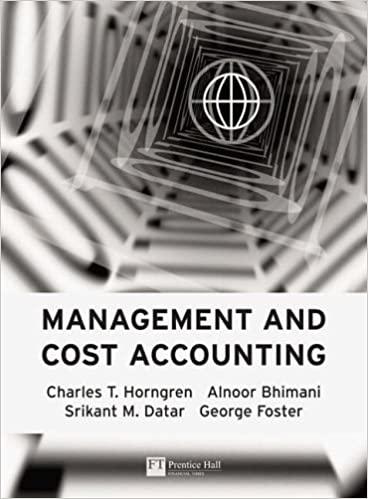Managerial accounting 14-8 questions


Differential Analysis: The Key to Decision Making EXERCISE 11-4 Special Order Decision LO11-4 manufactures and sells a gold bracelet for $189.95. The company's accounting system says that the unit product cost for this bracelet is S149.00 as shown below: Direct materials Direct labor . Manufacturing overhead $84.00 45.00 20.00 Unit product cost$149.00 The members of a wedding party have approached Imperial Jewelers about buying 20 of these gold bracelets for the discounted price of $169.95 each. The members of the wedding party would like special filigree applied to the bracelets that would require Imperial Jewelers to buy a special tool for $250 and that would increase the direct materials cost per bracelet by $2.00. The special tool would have no other use once the special order is completed. To analyze this special order opportunity, Imperial Jewelers has determined that most of its manufacturing overhead is fixed and unaffected by variations in how much jewelry is produced in any given period. However $4.00 of the overhead is variable with respect to the number of bracelets produced. The company also believes that accepting this order would have no effect on its ability to produce and sell jewelry to other customers. Furthermore, the company could fulfill the wedding party's order using its existing manufacturing capacity Required 1. What is the financial advantage (disadvantage) of accepting the special order from the wedding party? 2. Should the company accept the special order? EXERCISE 11-5 Volume Trade-Off Decisions LO11-5 Outdoor Luggage, Inc., makes high-end, hard-sided luggage for sports equipment. Data concerning three of the company's most popular models appear below. Ski Guard Golf Guard Fishing Guard $200 $60 $300 $140 $255 $55 Variable cost per unit . hino processingt 688 Chapter 14 Castile Products, Inc Income Statement nber 31 Sales Cost of goods sold Gross margin Selling and administrative expenses $420,000 292,500 127,500 89,500 38.000 8,000 On ti Interest expense Net income before taxes Income taxes (30% 9,000 t income Account balances at the beginning of the year were: accounts receivable, $25,000; and inventory $60,000. All sales were on account Required: Compute the following financial data and ratios: I. Working capital 2. Current ratio. 3. Acid-test ratio. 4. Debi-to-equity ratio. 5. Times interest earned ratio. 6. Average collection period. 7. Average sale period. Ratios for Assessing Profitability and Managing Debt LO14-4, LO014-5










